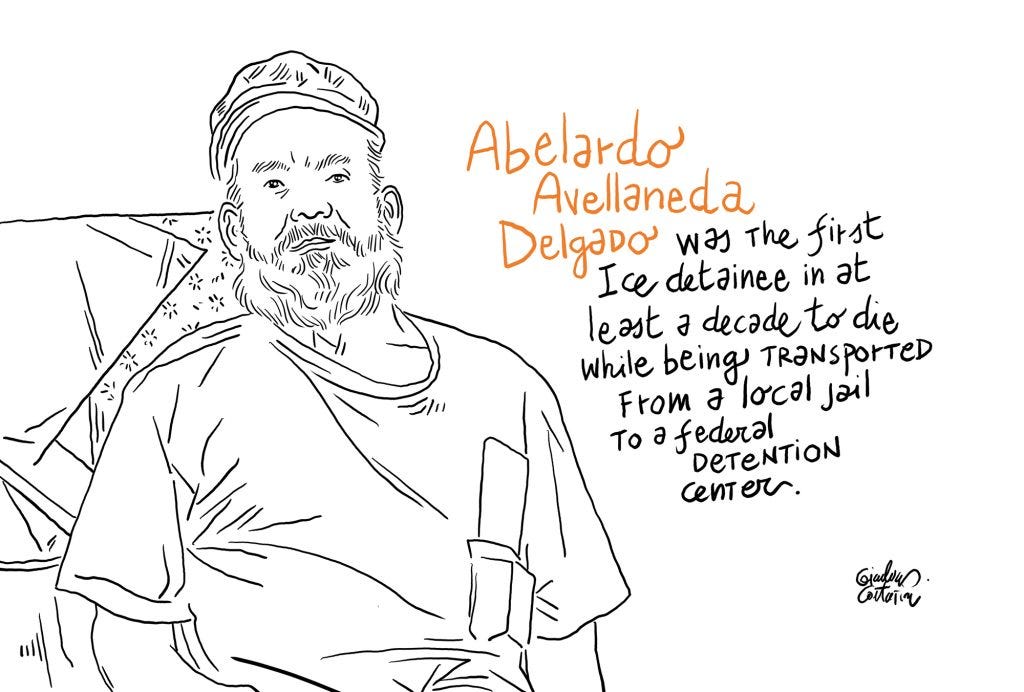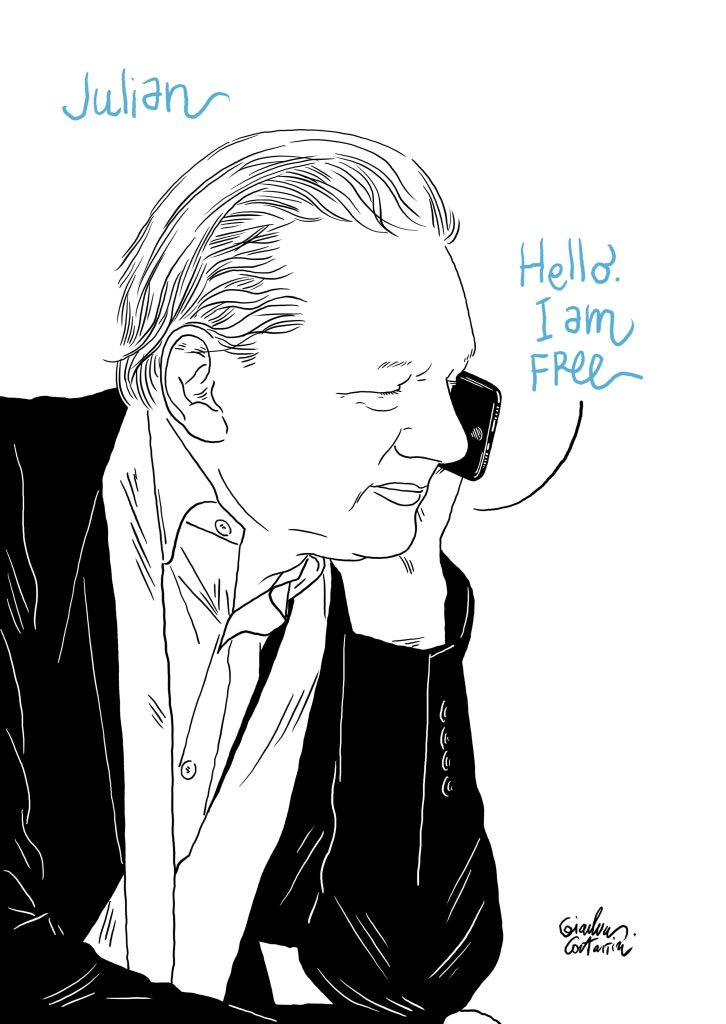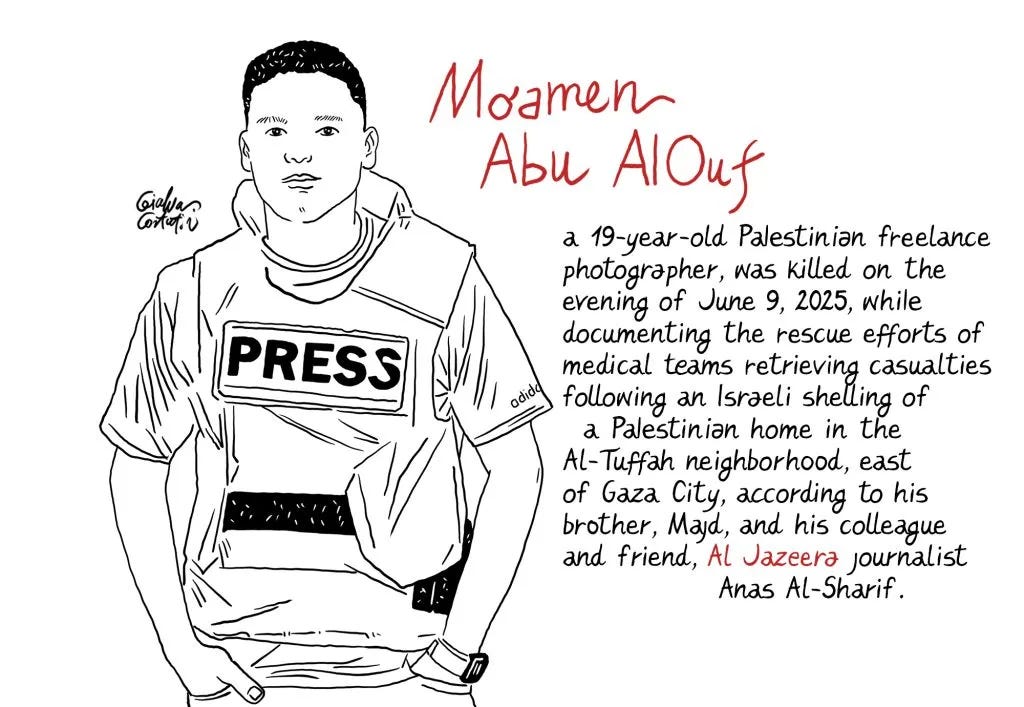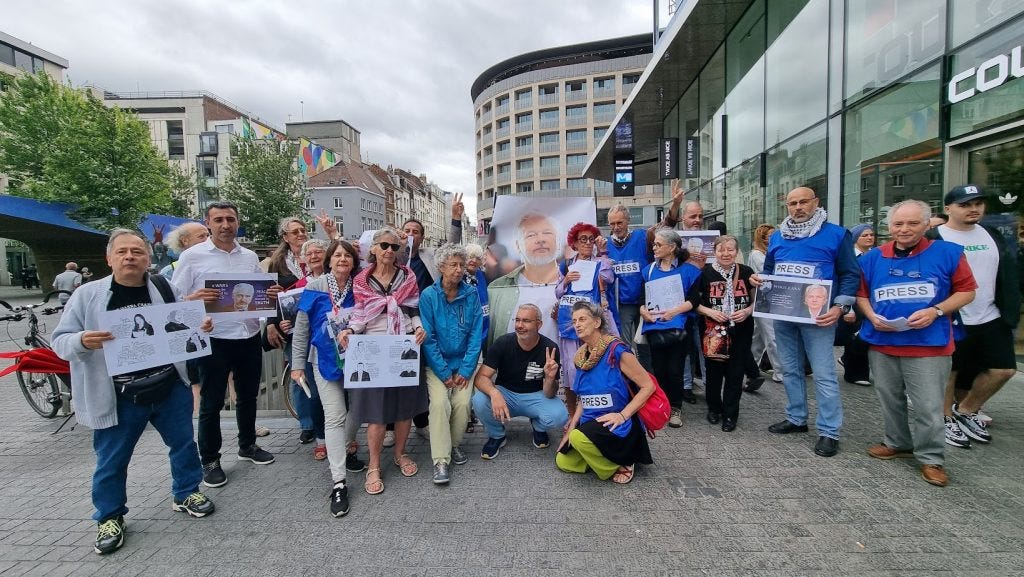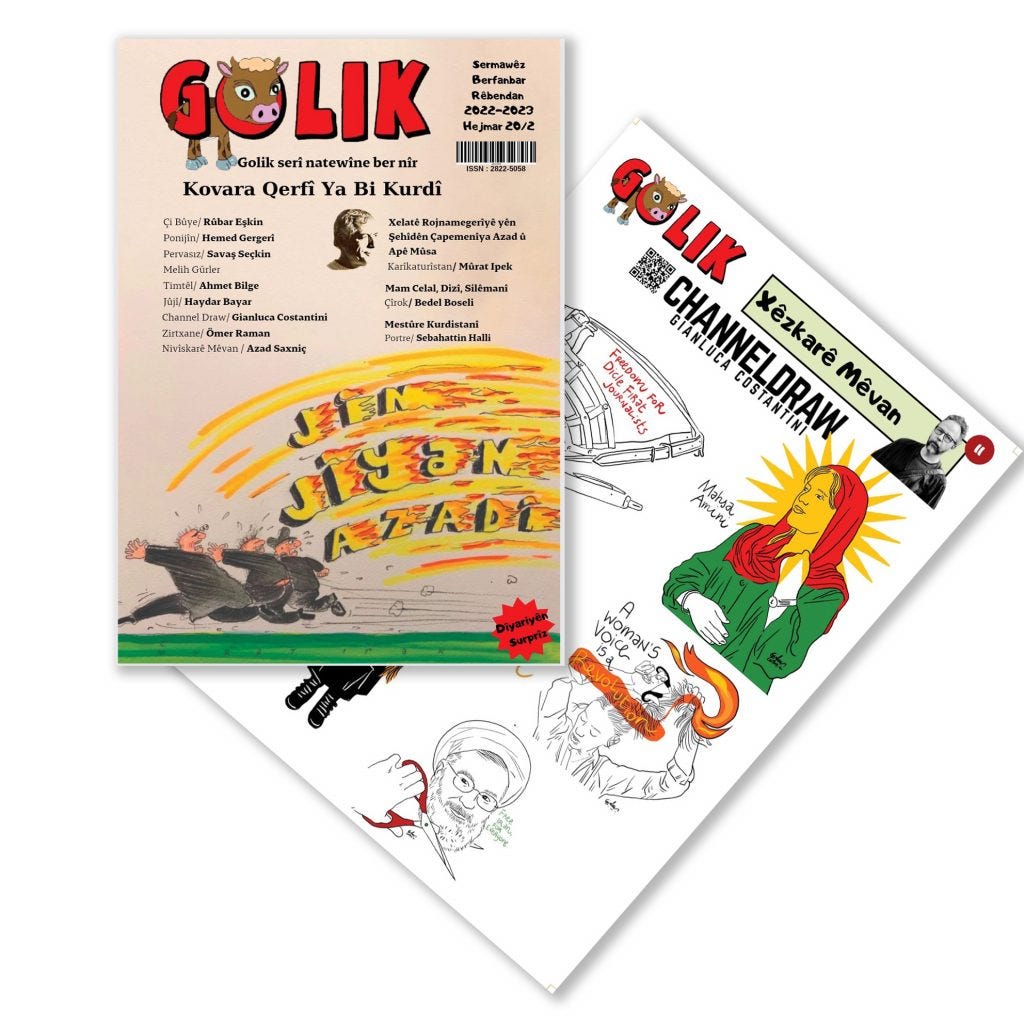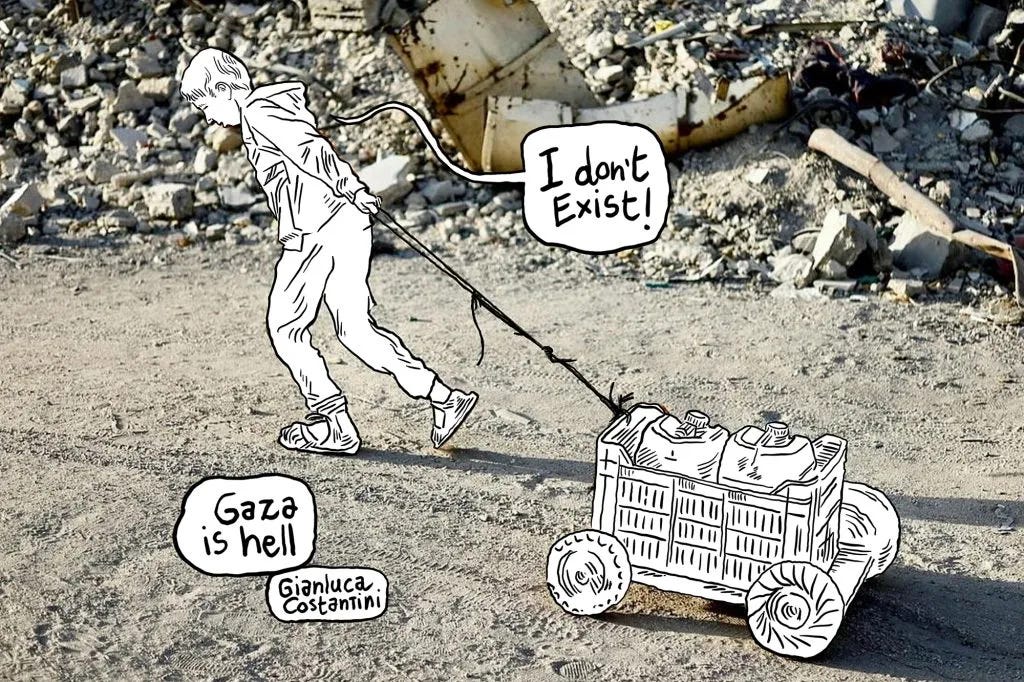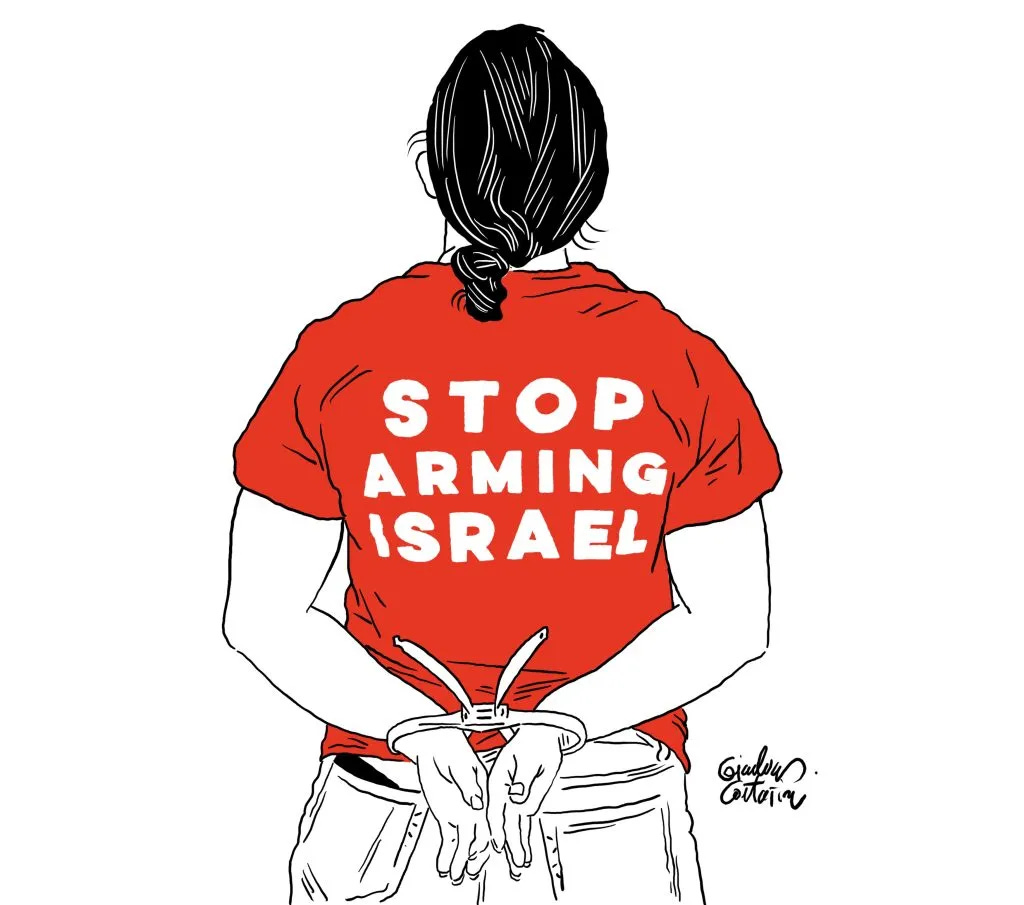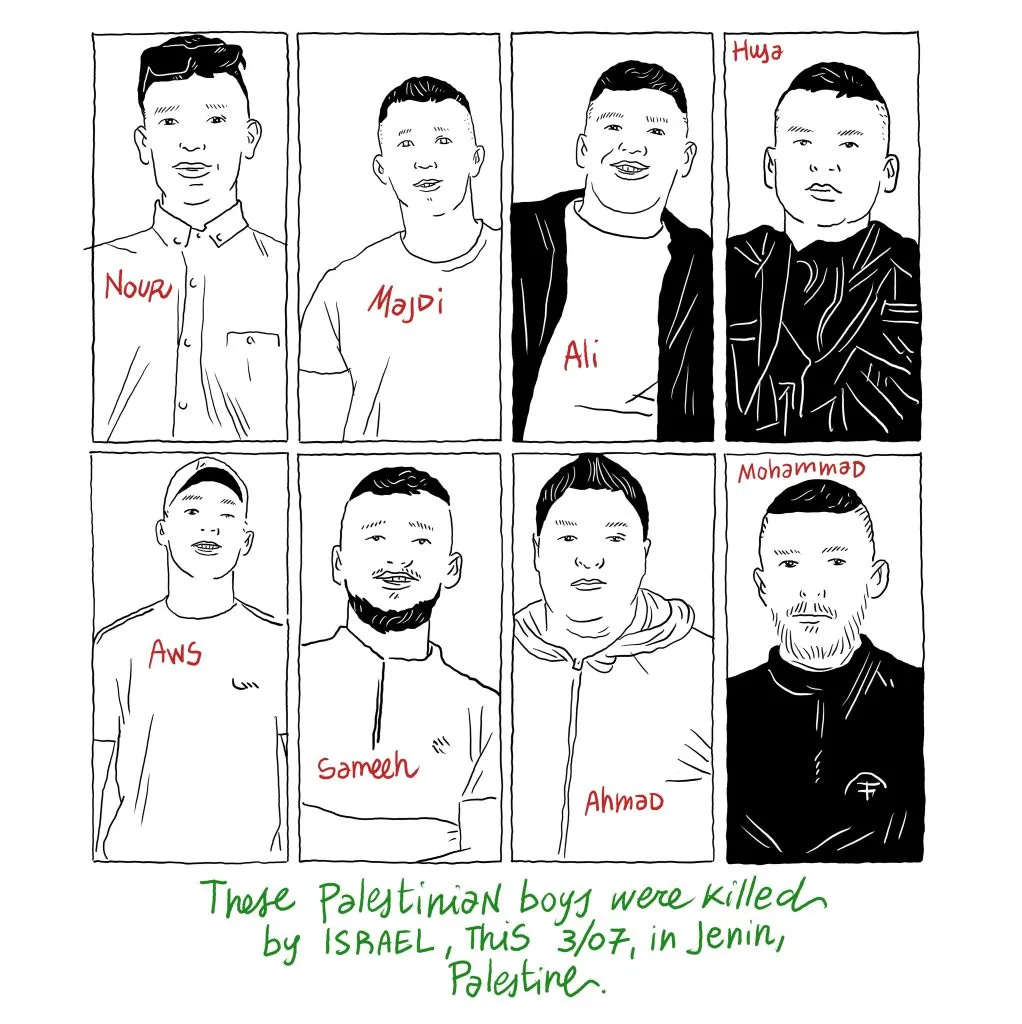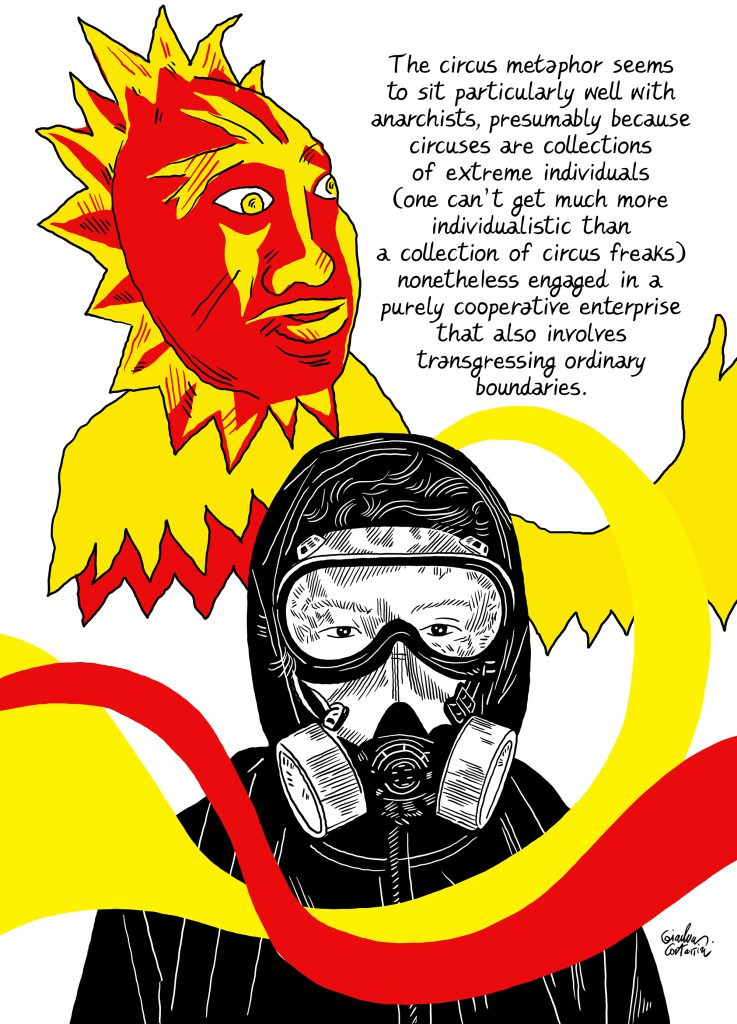Drawing the Edges of the World
Tracing stories of struggle, hope, and resistance, one line at a time.
Zohran Kwame Mamdani: The Socialist Rapper Who Wants to Be New York’s Next Mayor
From Multicultural Queens to the State Assembly: Portrait of the Socialist Candidate Promising Free Transit, Frozen Rents, and a Fairer City
Zohran Kwame Mamdani is one of the most talked-about names in New York politics today. At 33, with Ugandan and Indian roots, Mamdani embodies a new generation of progressive leaders shifting the Democratic Party further to the left in America’s largest city.
Born in 1991 in Kampala, Uganda, he is the son of Mahmood Mamdani, one of Africa’s most influential intellectuals, and Mira Nair, the internationally acclaimed director behind films like Monsoon Wedding. After spending his early childhood between Africa, India, and the United States, he settled permanently in New York as a child, growing up in Queens—one of the city’s most diverse neighborhoods.
He earned a degree in Africana Studies from Bowdoin College and got involved in politics from the ground up: first as a rapper under the stage name Mr. Cardamom, then as a grassroots organizer helping families facing eviction and foreclosure. In 2017, he joined the Democratic Socialists of America and began canvassing door-to-door for local progressive candidates.
In 2020, he pulled off an upset victory in the Democratic primary for the New York State Assembly’s 36th District, defeating a long-standing party figure. Since then, he has stood out for his bold proposals: freezing rents, making buses and subways free, creating city-run grocery stores, and pushing for a $30 minimum wage by 2030.
A vocal supporter of Palestinian rights and a critic of Israeli policies, Mamdani has never shied away from joining hunger strikes and solidarity rallies for Gaza. His stance has brought attacks from pro-Israel groups and conservative media but has earned him deep loyalty among grassroots activists.
Today, according to the latest polls, Mamdani leads the race for the Democratic nomination for Mayor of New York, ahead of establishment figures like Andrew Cuomo. His bid is backed by Alexandria Ocasio-Cortez and Bernie Sanders, but it worries big business interests and real estate owners, who fear higher taxes and stricter market regulations.
For his supporters, Mamdani represents a real hope to reverse the deepening inequalities that have marked the city in recent years. For his critics, he is an idealist who could jeopardize the economic stability of America’s financial capital.
One thing is certain: in Astoria, the neighborhood where he still lives with his wife, Rama Duwaji, Zohran Mamdani continues to do what he did before politics—talk to neighbors, listen to the stories of people struggling to make ends meet, and walk the sidewalks, door to door, tweet by tweet.
Read more: Channeldraw
Death in Custody: The Avellaneda-Delgado Case and the Flaws in the ICE System
The first time Junior Avellaneda was able to see his father after nearly a month of silence behind bars, the man whom Lowndes County Jail staff wheeled into the visitation room no longer resembled the lively 68-year-old who, just weeks earlier, would rise at dawn to get coffee at the local gas station and greet friends and neighbors.
“He was an empty shell,” Junior recalls. “He couldn’t even lift the phone to hear me.”
That visit took place on May 4. Twenty-four hours later, Abelardo “Lalo” Avellaneda-Delgado was dead.
From that moment on, a spiral of unanswered questions, unacknowledged negligence, and official documents contradicting witness accounts and medical reports began to unfold: something doesn’t add up in the death of this elderly, non-violent man who died during an ICE transfer in Georgia.
Arrested on April 9 for an alleged probation violation, Avellaneda-Delgado entered Lowndes County Jail in what his family described as good condition for his age. According to official records, he had no known major medical problems. Yet, by late April, family members were struggling to get updates or permission to visit.
Only on May 4 did Junior finally see his father. His condition was so alarming that Junior left the jail in tears and immediately called his sister Nayely. The next day, Nayely went to the jail herself, demanding to see her father and asking if he was receiving proper care. Jail staff denied both requests, citing vague privacy rules.
Meanwhile, unbeknownst to the family, Lalo was handed over to ICE custody and placed in a van bound for the Stewart Detention Center, operated by CoreCivic, one of the largest private immigration detention contractors in the country.
On May 5 at 12:35 p.m., a 911 call from TransCor—a CoreCivic subsidiary responsible for the transport—reported that one of the five detainees in the van was unresponsive. “He’s not responding, not opening his eyes, not looking at us,” Captain Jamaya West told the dispatcher.
At 12:49 p.m., paramedics arrived. They found Avellaneda-Delgado sitting upright against the van wall, cold, stiff, with no pulse or breath. Medics moved him to the center of the vehicle to attempt CPR, but it was immediately clear he had been dead for some time. His skin color, rigidity, and fixed, dilated pupils confirmed it.
According to doctors consulted by the Atlanta Community Press Collective, these signs indicate Avellaneda-Delgado died well before the 911 call. “It takes about 30-45 minutes for a body to become cold to the touch,” explains forensic pathologist Kris Sperry. So the official version that he died during the ride is highly unlikely. His position—seated upright with his back against the van—also suggests no resuscitation was ever attempted.
Perhaps the most troubling detail is this: according to Webster County EMS records, Avellaneda-Delgado’s blood pressure was documented at 226/57, a reading classified as a hypertensive crisis — potentially life-threatening.
Coroner Steven Hubbard is unequivocal: “If that blood pressure was known before the transfer, he should never have been put on a van. He should have been taken to a hospital.”
Yet neither jail staff nor TransCor mentioned this fact. Both claimed the man was fit to travel. Lowndes County Jail insists Avellaneda-Delgado was in the medical unit just as a precaution because of his age. His family doesn’t buy it. “It’s a lie,” says Nayely. “If he had been in good health, they would have let me in. My brother wouldn’t have called me crying.”
Nearly two months after his death, no state or federal agency has formally requested the medical records from Lowndes County Jail, according to Captain Jason Clifton. Neither ICE, the Georgia Bureau of Investigation, nor CoreCivic has released a complete or transparent statement.
On May 17, the family buried Lalo in Valdosta. Neither before nor since have they received full official documentation, a clear medical report, or any visible sign of a formal investigation.
During a congressional hearing just days after Lalo’s death, then-acting ICE director Todd Lyons declared: “We have nothing to hide. We will be fully transparent.” Yet the official ICE death report does not include a cause of death or any medical detail.
The Avellaneda-Delgado case highlights the fragility of the U.S. immigration detention system, especially facilities run by private companies under federal contracts. To this day, ICE lacks a standardized medical oversight system. Transport companies like TransCor face no systematic external monitoring, and detainees’ families often have no timely access to their loved ones’ health information.
Moreover, under the Trump administration and continuing under Biden amid ramped-up arrests, deaths in ICE custody have increased. Lalo’s death is the first known in more than a decade to occur during a transfer, but it may not be the last.
“We want justice. We want to know what really happened to him,” says Sammy Avellaneda, Lalo’s eldest son.
Meanwhile, the family continues to share photos of Lalo smiling next to roadside animal statues in rural Georgia, or dancing at family parties. “He was a simple, generous man,” Junior says. “He taught us respect. He taught us to be present. He was a good father.”
In the absence of answers, their fight for the truth goes on. Because Lalo is not just a victim. He is the face of a system that failed to protect the people in its care.
Read more: Channeldraw
Assange’s First Year of Freedom: Between Family, Activism, and Fragile Health
One year has passed since Julian Assange, founder of WikiLeaks and a symbol of the fight for press freedom, walked out of a British prison after years of detention and an endless legal battle with the United States. His release came after a complex and controversial agreement: after more than a decade of diplomatic tensions and mounting pressure from governments, activists, and human rights organizations, Assange agreed to plead guilty to a minor violation of U.S. espionage and hacking laws. In exchange, the Department of Justice dropped the more serious charges that could have led to decades in a U.S. prison.
The deal was negotiated at a time of intense international pressure: various governments — from Australia, Assange’s home country, to members of the UK Parliament — called on Washington to close the case on humanitarian grounds, citing Assange’s deteriorating health after years of isolation and incarceration. Prominent journalists, Nobel laureates, and organizations like Amnesty International had also stepped up their campaigns for his release in recent years, describing his prosecution as a direct threat to press freedom worldwide.
Another key factor was the shifting political context: under the Biden administration, some factions within the Democratic Party increasingly viewed the highly symbolic case as politically costly and counterproductive, especially after revelations about controversial CIA methods used to try to neutralize WikiLeaks.
Once released, Assange was finally able to embrace his wife, Stella Moris, and their two young sons, Gabriel and Max. Immediately after his release, he moved with his family to an undisclosed location to recover his physical and mental health, severely damaged by years of isolation. The first months were devoted almost entirely to family life: medical treatment, walks in nature, staying out of the spotlight, and slowly returning to a sense of normalcy, with school for the children and daily moments long denied.
Despite the agreement, his legal situation is not entirely risk-free. Some supporters fear that new legal action could be taken in the future related to other document disclosures. For this reason, Assange’s lawyers and press freedom groups continue to watch closely for any move by U.S. authorities.
Meanwhile, WikiLeaks has resumed publishing archive material and supporting training projects on digital security and institutional transparency. Assange himself has not yet returned to high-profile public events; instead, he prefers to share his views through statements released by his wife or legal team.
His case continues to fuel a global debate: for many, it remains the clearest example of how democratic governments can punish those who reveal war crimes and embarrassing state secrets. Even though he is now a free man, his story remains a warning and a symbol: the truth comes at a high price, but without those who risk everything to expose it, democracy is an empty word.
Sources
Plea deal & release
Al Jazeera: “WikiLeaks founder Julian Assange released from prison after US plea deal” dw.com+11aljazeera.com+11uwa.edu.au+11
ABC News: “Julian Assange freed from UK prison under plea deal with US Justice Department” voanews.com+4abc.net.au+4independent.co.uk+4
Key details of the agreement
DW: “WikiLeaks founder Julian Assange freed in US plea deal” dw.com+1lemonde.fr+1
Le Monde: “WikiLeaks founder Julian Assange freed in deal with US” apnews.com+11lemonde.fr+11aljazeera.com+11
CIA assassination/kidnap plot revelations
Yahoo News: “Kidnapping, assassination and a London shoot‑out: Inside the CIA’s secret war plans” en.wikipedia.org+2yahoo.com+2aarclibrary.org+2
Al Jazeera The Listening Post: “Kidnap or Kill: The CIA’s plot against WikiLeaks’ Julian Assange” greekreporter.com+3aljazeera.com+3indy100.com+3
Read more: Channeldraw
Moamen Abu AlOuf, 19, Dies Documenting the Aftermath of War
Moamen Abu AlOuf, a 19-year-old Palestinian freelance photographer, was killed on the evening of June 9, 2025, while documenting the rescue efforts of medical teams retrieving casualties after an Israeli shelling of a Palestinian home in the Al-Tuffah neighborhood, east of Gaza City. He was accompanying paramedic teams to document the aftermath of an earlier strike that had already left several civilians dead or wounded. As soon as the medical crews began retrieving the bodies and tending to the injured, Israeli artillery fire from a tank directly targeted them. The strike killed Abu AlOuf instantly, along with three paramedics and some of the wounded survivors from the earlier attack.
Abu AlOuf had been living in the Jabalia refugee camp in northern Gaza and had spent the entire war covering events across Gaza City and the northern part of the Strip. He had documented sieges on hospitals, mass casualties, and the destruction of civilian infrastructure. His work—posted regularly to his Instagram account, which had more than 78,000 followers—offered a steady stream of photos, videos, and news updates from the ground. His reporting gave visibility to the suffering endured in areas largely inaccessible to international media.
According to his brother Majd, Moamen was torn to pieces by the direct impact of the tank shell. Initially, rescue teams were prevented from recovering the bodies due to the Israeli army’s refusal to grant access to the site. It wasn’t until the following morning that civil defense teams managed to retrieve their remains, found in fragments.
Friends and colleagues say Moamen had received multiple threats before his death. After the news of his killing broke, a screenshot of one of the threatening messages he had received from Israeli phone numbers was shared on his Instagram account by friends. Videos of his mother mourning at his funeral circulated widely online, as did WhatsApp messages and videos he had recently sent to friends, discussing the possibility of his own death.
The Israel Defense Forces, when contacted by the Committee to Protect Journalists, claimed they were not aware of the incident involving Abu AlOuf’s death but said they would review the claims.
Moamen Abu AlOuf is remembered not only for his bravery as a young journalist but also for the raw immediacy of his storytelling. He documented his homeland’s destruction with the hope of making it seen and understood by the outside world. In the absence of formal investigations or accountability, his death stands as yet another tragic example of the lethal risks faced by those reporting from Gaza. His camera is gone, but his images remain—fragments of truth from a war that continues to silence too many voices.
Gianluca Costantini’s artistic project dedicated to journalists killed in Palestine is a powerful act of visual memory and political denunciation. Through drawing, Costantini portrays — one by one — the reporters, photographers, cameramen, and media workers who have lost their lives in the conflict, particularly since the escalation of violence that began in October 2023 between Israel and Hamas.
The initiative, titled “Portraits of Journalists in the Israel-Gaza Conflict”, is created in collaboration with the Committee to Protect Journalists (CPJ), a New York-based international organization that monitors press freedom worldwide. The complete series — composed of over 180 portraits — is available online at channeldraw.org.
Each drawing is an individual tribute: a face, a name, a date of death, and, in some cases, brief words describing who they were, what they did, and where they were killed. The essential quality of Costantini’s line, characteristic of his style, merges with the urgency of testimony. The project has a dual purpose: to restore humanity to victims too often reduced to numbers, and to denounce the systematic violation of the right to information in the Palestinian territories.
The project also functions as an artistic and political archive, regularly updated, offering a visual counter-narrative to dominant silences or distorted media coverage. Costantini, who has long been active in graphic journalism and human rights illustration, uses the language of art to defend the memory of those who documented the truth until their last moment.
The drawings have been shared by NGOs, international media, and activists around the world, becoming tools of mobilization and solidarity. In a context where press freedom is under threat, Costantini’s work reminds us that reporting on war can cost lives — but forgetting the fallen journalists means killing them a second time.
Read more: Channeldraw
Justice Denied: The Homicide of Blogger and Teacher Albert Ojwang
On June 6, 2025, Albert Ojwang, 31, a blogger and teacher from Homa Bay, was arrested for an alleged online defamation of Deputy Inspector General of Police Eliud Lagat and urgently transferred from Homa Bay County to the Central Police Station in Nairobi—over 400 km away. Two days later, on June 8, he was found dead in his cell; local police initially described it as a “suspected suicide,” without releasing any surveillance footage or medical details. An autopsy performed by five independent pathologists ruled out suicide, revealing skull fractures consistent with blows from another person, neck compression, and numerous bruises—unequivocal signs of violence. Based on these findings, the case was reclassified as a homicide, and five officers on duty at the Nairobi station were suspended.
On June 23, 2025, the Prosecutor’s Office formally charged six people, including three police officers, with murder, while testimony emerged that superiors had ordered “strong measures” against Ojwang. These revelations sparked demonstrations nationwide: young people, civil‑rights groups, and the Bloggers Association of Kenya (BAKE) accused the government of protecting corrupt officials and decried a culture of impunity. President William Ruto called the case “heart‑breaking and unacceptable” and promised an impartial investigation—but he did not suspend Deputy Inspector General Lagat, raising doubts about his true commitment to reform. The Council of Governors and the Independent Policing Oversight Authority (IPOA) have demanded full transparency of surveillance footage and the rapid release of all video recordings from the police station.
Albert Ojwang’s death has become a symbol of the struggle over digital rights and the escalation of “legalized” violence. Late‑June protests—sparked by last year’s demonstrations against tax hikes—gained fresh momentum from calls for truth and justice for Ojwang: at least eight people were killed in the clashes that followed. As the trial of the accused officers continues, the broader fight over police reform and the independence of investigative bodies remains unresolved. The Ojwang case not only exposes a grave instance of institutional violence but also highlights the fragility of procedural safeguards in Kenya: police transparency and the right to online criticism are now at the center of political debate, with potential repercussions for the next elections.
According to Boniface Mwanghi, “Albert Ojwang has been silenced forever by Ruto’s regime. Just a month ago he was overjoyed at becoming a father. Albert was a teacher who used his social media channels to fight for a better Kenya. DCI officers picked him up from his home in Homa Bay and, after driving over 350 km to Nairobi, murdered him in a cold holding cell.” Mwanghi emphasizes that Ojwang’s only “crime” was accusing Deputy Inspector General Lagat—accurately, given rampant corruption—of collecting bribes amounting to Ksh 100 million per month. “If Lagat pockets that kind of money,” Mwanghi explains, “the funds must reach his boss, Kanja, and their political godfather, Mr. Ruto. Ruto is the king of ruin: he’d rather burn Kenya to the ground to rule over the ashes. We will not allow one sociopath to destroy the country.” These words capture the outrage of those who refuse to accept impunity in the face of institutional violence and corruption.
Read more: Channeldraw
Julian Assange, Gaza, and the Portraits Defending Journalism in Brussels
The Free.Assange.Belgium committee, together with Mariefrance Deprez, Luk Vervaet, Monique Lermusiaux, Christine Pierard, Ali Aarrass, and numerous activists, gathered at Place de la Monnaie in Brussels to commemorate the first anniversary of Julian Assange’s release. As they have done for the past five years, the aim of the gathering was to reaffirm the importance of freedom of information, with protest slogans, a leaflet distributed to passersby, and the firm conviction that the fight against the criminalization of journalism is far from over.
In the leaflet, they strongly remind people that Assange regained his freedom after 273 weeks of constant mobilization. It emphasizes how the United States persecuted him for exposing uncomfortable truths, turning the work of journalism into an alleged act of espionage by misusing the Espionage Act. It recalls that Assange publicly highlighted this contradiction, and that many in the US are working to change these laws so that such tools can no longer be used to intimidate journalists or whistleblowers.
The leaflet mentions two key events from his first year of freedom: his testimony at the Council of Europe (October 2024), which recognized him as a political prisoner, and his participation in the Cannes Film Festival (May 2025), where he wore a T-shirt bearing the names of 4,986 children killed in Gaza.
The article dedicated to press freedom strongly connects with current events: the deep concern for journalists working in Gaza and the West Bank, forced to wear helmets and vests that, while symbolizing their role, also make them targets. The gathering affirms that by targeting those wearing the word “Press,” Israel shows its “terrorist” face and seeks to control the flow of information by excluding independent outlets.
Alongside civic commitment, artist and activist Gianluca Costantini has used drawing as a new frontier of memorial and protest. Since October 7, 2023, following the start of the bombings in Gaza, Costantini has created a series of digital portraits—later displayed in large format—of journalists killed during the conflict.This visual gallery, developed in collaboration with the Committee to Protect Journalists in New York, serves to keep alive the memory of those who lost their lives reporting on the war.
In Bologna, from June 12 to 22, 2024, at Squadro Stamperia d’Arte, the exhibition “In the Crosshairs of Memory – Portraits of Journalists Killed in Palestine” opened. Sixty to eighty digital portraits, four large-format original drawings, and an intense dialogue between sociologists and Amnesty International representatives created a collective visual memorial. It is a ritual of care: each face becomes an “ultimate gesture of gratitude,” a way to ensure that oblivion does not erase the sacrifice of those who paid with their lives to make uncomfortable truths known.
Today, Costantini’s portraits have appeared in protests and international initiatives—from Atlanta to Berlin, and in Naples—and have been seen as an “explicit political warning” against the deliberate eradication of media in conflict zones.
The joint action of Free.Assange.Belgium and Gianluca Costantini offers a coordinated reading of the present. On one hand, Assange’s freedom embodies the fight for press freedom and the right to information even in the face of oppressive laws. On the other, the faces traced through art remind us that many, today, are paying with their lives for their role as narrators of reality.
The gathering in Brussels, enriched by the symbolic power of the artistic project, sends a strong message: freedom of information is a non-negotiable right. And if journalism has become a “crime” in the eyes of some leaders, drawing and civic organization respond that it will “never be a crime” to ask questions, to document, to preserve memory.
A user on r/oknotizie wrote in July 2024, regarding the raids and the killing of journalists:
“The list of slaughtered journalists keeps growing… It has now risen to at least 158 media workers killed… journalists ‘have become actual targets.’”
This comment demonstrates how, in the Gaza conflict, journalism is not seen as collateral damage but as a deliberate objective.
The Brussels gathering is not just an anniversary; it is a step in a path that connects press freedom, international justice, and the right to truth. Costantini’s portraits are the visual testimony of a massacre with no identified culprits—and they become an invitation not to look away.
Together, art and civic action remind us that the fight for truth is always active. And in defense of the right to inform and the humanity of those who do it, every word, every drawing, every gathering carries weight and value.
Read more: Channeldraw
Tension in Istanbul: Turkish Cartoonists Detained Over Alleged Prophet Cartoon
Four Turkish cartoonists were detained on Monday on charges of drawing and distributing a cartoon that, according to authorities and protesters, depicts the Prophet Muhammad and Moses.
The cartoon, published in the satirical weekly LeMan, showed a Muslim man and a Jewish man—both with wings and halos—shaking hands while bombs fall beneath them. The image went viral four days after publication, sparking protests in Istanbul where hundreds of people marched, chanting “Allahu Akbar” and calling for the implementation of Sharia law.
Turkish authorities quickly condemned the publication. Interior Minister Ali Yerlikaya called the cartoon “a provocation,” stating that those “who dare to do this will be held accountable before the law,” insisting it does not fall under freedom of expression. Fahrettin Altun, head of communications for the Turkish Presidency, also described the cartoon as “a vile attack on our values.”
Justice Minister Yilmaz Tunc announced that an investigation had been launched under Article 216 of the Turkish Penal Code for “publicly insulting religious values.”
“Disrespect towards our beliefs is never acceptable,” he wrote on X. “No freedom grants the right to make the sacred values of a belief the subject of ugly humour. The caricature or any form of visual representation of our prophet not only harms our religious values but also damages societal peace.”
Protests turn violent in Istanbul
Clashes erupted in Istanbul on Monday as police fired rubber bullets and tear gas to disperse protesters who gathered after the cartoon went viral. Istanbul’s chief prosecutor ordered the arrest of LeMan’s editors on grounds that the cartoon “publicly insulted religious values.”
According to reports, dozens of angry protesters attacked a bar in downtown Istanbul frequented by LeMan staff, leading to scuffles with police. The clashes escalated to involve between 250 to 300 people.
Istanbul’s governor, Davut Gul, condemned “this mentality that seeks to provoke society by attacking our sacred values,” stating:
“We will not remain silent in the face of any vile act targeting our nation’s faith.”
LeMan responds: “This cartoon does not depict the Prophet Muhammad”
LeMan, a publication known for its irreverent satire in the style of Charlie Hebdo, has clarified that the cartoon does not depict the Prophet Muhammad but rather a Muslim man named Muhammad who was killed in Israeli bombings.
Tuncay Akgun, the editor-in-chief of LeMan, told Agence France-Presse:
“This cartoon is not a caricature of the Prophet Muhammad in any way. In this work, the name of a Muslim who was killed in the bombardments of Israel is fictionalised as Muhammad. More than 200 million people in the Islamic world are named Muhammad. It has nothing to do with the Prophet Muhammad. We would never take such a risk.”
In a string of posts on X, LeMan defended the cartoon, stating it was being deliberately misinterpreted to create provocation.
“The cartoonist wanted to portray the righteousness of the oppressed Muslim people by depicting a Muslim killed by Israel, he never intended to belittle religious values,” the statement read. “We do not accept the stigma imposed on us because there is no depiction of our prophet. It takes a very malicious person to interpret the cartoon in this way. We apologise to our well-intentioned readers who we think were subjected to provocations.”
Arrests confirmed as authorities vow action
Interior Minister Ali Yerlikaya confirmed on X that police had arrested the cartoonist responsible for the image as well as LeMan’s graphic designer.
“The person named DP who made this vile drawing has been caught and taken into custody,” he wrote, adding, “These shameless individuals will be held accountable before the law.”
Other individuals named in the arrest warrant included LeMan’s editor-in-chief and managing editor, according to media reports. Video footage released by authorities showed cartoonists detained in their homes, barefoot and handcuffed, with captions such as “You will not escape justice.”
Outside LeMan’s offices, protesters kicked down doors while chanting, “For our Prophet, we are ready to give and take lives; no one can insult our Prophet.” Some performed nighttime prayers in the streets as tensions continued to escalate.
A test for freedom of expression in Turkey
The case once again highlights the challenges facing freedom of expression and satire in Turkey, where tensions between religious values, national identity, and the right to critique remain high. Some groups have already announced further protests against LeMan for Tuesday as the investigation continues.
About LeMan
Founded in 1991 in Istanbul, LeMan is one of Turkey’s most prominent political satire magazines, known for its sharp, irreverent cartoons and bold critiques of authority. The magazine became especially targeted by conservative groups following its support for France’s Charlie Hebdo after its offices were attacked in Paris in 2015 by Islamist gunmen who killed 12 people following the publication of caricatures of the Prophet Muhammad.
Over the years, LeMan has faced lawsuits, fines, and confiscations of its issues due to its fearless satire, often testing the boundaries of press freedom in Turkey. It continues to publish weekly, providing a platform for Turkish cartoonists and standing as a symbol of resistance against censorship in the country’s increasingly restricted media environment.
Read more: Channeldraw
Squid Game and Gaza: A Comparison That Has Become Reality
Amid hunger, siege, and bombings, Gaza turns survival into a deadly game without rules, where each day is a rigged match in which losing means death, and winning means surviving only until the next round.
Squid Game is a series where desperate individuals agree to take part in deadly games to survive, controlled by a system that sets arbitrary rules and watches their suffering as entertainment.
In the Gaza Strip, under Israeli military control and managed by the Gaza Humanitarian Foundation (GHF), the Palestinian population is forced into an even more cruel deadly game, where the rules are neither fixed nor clear but designed to be broken or impossible to follow, turning access to food into a daily risk of death.
Shared dynamics:
A closed environment and desperation:
Squid Game: There is no way out; participants’ lives are in the hands of the organizers.
Gaza: Total blockade makes it impossible to escape hunger and war. Residents, desperate, face the choice between starving or risking being killed for a food package.
Total control over resources:
Squid Game: The games offer food and money only to those who survive.
Gaza: The GHF controls food distribution, with operations typically lasting 9-13 minutes per day, sometimes starting hours before the announced time or ending before they even begin, forcing people to sleep near the centers or walk 6-7 km through combat zones for a box of rice, lentils, and biscuits.
Chaos as the rule:
Squid Game: The rules are strict; breaking them means death.
Gaza: There are no clear rules. GHF announcements change constantly, creating a “game” in which:
If you go too early, you risk being shot.
If you wait, you risk arriving after closure.
Sometimes openings are announced after the center has already closed.
Other times, no announcements are made at all, generating panic and sudden rushes under Israeli sniper fire.
Some Israeli soldiers have described these centers as “extermination camps” or have compared the operations to Squid Game’s “red light, green light.”
Suffering as spectacle and a tool of power:
Squid Game: Deaths are entertainment for wealthy spectators.
Gaza: Images of Palestinians standing in line under bombardment for a food package become a geopolitical weapon and psychological pressure, while Israeli authorities exercise power over the population through hunger.
Filtering the population:
The GHF system excludes the elderly, women, disabled, and children. Only young men, capable of enduring exhausting walks and risking bullets, can approach the centers, turning access to food into a “natural selection” used to systematically eliminate young males and weaken Palestinian families.
A game repeated weekly:
Like Squid Game’s round-based challenges, Palestinians must repeat the “trial” each week to receive a new aid package, knowing they may die just to try to survive.
Key differences: Gaza is worse than Squid Game
In Squid Game, the rules are clear, however deadly.
In Gaza, the rules do not exist or are a trap.
In Squid Game, there is a chance of victory.
In Gaza, there is no chance of winning: the “game” is designed to reduce, control, and terrorize the population.
Conclusion
The comparison between Squid Game and Israeli management in Gaza is not rhetorical exaggeration but a harsh, real metaphor:
Turning survival into a deadly game.
Using hunger as a weapon of control.
Exploiting arbitrary rules to kill, filter, and weaken a people.
The difference, however, is that Gaza is not a TV series. It is the daily reality of those who, amid hunger, siege, and bombardment, are forced to play a rigged game where losing means dying, and winning means surviving only until the next round.
Sources
Mada Masr, “The deadly game of Gaza’s aid distribution,” July 2025. [Read]
Haaretz, testimonies of Israeli soldiers on operations near GHF centers, July 2025. [Read]
The Guardian, reporting on Israel’s alternative aid system and its implementation, March 2025. [Read]
New York Times, investigation into the planning and control of Gaza aid distribution, May 2025. [Read]
UN Security Council briefing by Tom Fletcher, Under-Secretary-General for Humanitarian Affairs, May 2025. [Read]
Statements by UNICEF spokesperson James Elder, May 2025. [Read]
Washington Post, on the operational planning of Israel’s aid distribution model, April 2025. [Read]
Strategy paper: Yotam HaCohen, Light at the End of the Tunnel: Toward a Civil Campaign, July 2024. [Read]
Read more: Channeldraw
Art for Social Imagination: A Global Project with the David Graeber Institute
Gianluca Costantini joins the project curated by the David Graeber Institute, which has invited 14 artists from different parts of the world to create works inspired by the essays collected in the volume The Ultimate Hidden Truth of the World…, published in November 2024.
The book, which brings together twenty years of David Graeber’s writings—including There Never Was a West, Against Economics, and Dead Zones of Imagination—features forewords by Rebecca Solnit and Nika Dubrovsky. Following its publication, the David Graeber Institute organized a series of public lectures and online talks to further explore the themes addressed in these essays, inviting artists to offer their own visual interpretations of the texts.
The project, curated by Nika Dubrovsky, Elena Sorokina, Radical Care Collective, and Clive Russell, has brought together artists from diverse backgrounds and disciplines, including Ahmet Öğüt, Mandy El-Sayegh, Chris Haughton, Joan Cornellà, Rafaela Drazic, Frank Arbelo, Dima Kashtalyan, Zbyněk Baladran, Clive Russell, Gianluca Costantini, Matt Jones, Kolya Oleynikov, BOLOHO, and Miles Glyn.
The resulting artworks, presented as posters, will be available in print and as an A2 booklet to be distributed in selected bookstores across the United Kingdom and the United States, thanks to FSG and Penguin/Allen Lane.
The A2 booklet of posters can be downloaded for free at the link provided, helping to spread David Graeber’s thinking through visual art while encouraging collective reflection on themes of freedom, economics, and social imagination.
Here you can download a free A2 brochure with posters. Link




